“No, this is not footage from World War Two…not even scenes from the new, ‘Top Gun’ movie with Tom Cruise……this is just the…Ukrainian Air Force…training sports aircraft Yak-52, which they are using either as an interceptor aircraft or as a mobile, anti-aircraft platform…The second person in the plane is a Ukrainian with a double-barreled shotgun, firing at our UAV (drone) like it’s a shooting gallery. As ridiculous as it sounds, in the Kherson direction, the enemy has already shot down two (Orlan-10) UAVs.”— Russian Military Informant Telegram channel, July 2024.
The Yakovlev Yak-52 is a Soviet-era, vintage, two-seat, primary trainer aircraft, which first flew in 1976, and was produced until 1998 by Aerostar of Romania. It’s powered by a 360-horsepower, Vedeneyev M-14P nine-cylinder, radial engine, driving a two-blade, wood-and-fiberglass, laminate propeller.
The Yak-52 is very simple and lightweight, easy to fly, responsive, and exceptionally aerobatic, stressed to +7gs, and maneuvering at up to 352 degrees per second (to the right side.) It’s able to cruise at 120 mph, with a top speed of 177 mph, or more than 180 mph in a slight dive, and an extremely low, stall speed of just 53 mph, making it ideal for low-speed maneuvers. In addition, its radar cross-section is only one-quarter that of a typical, fighter aircraft, so it’s reasonably stealthy, in an old-fashioned sense.
Although the Yak-52 is no longer a frontline, air force aircraft, it still serves with DOSAAF (Volunteer Society for the Assistance to the Army, Aviation, and Navy) all-volunteer, paramilitary units, with the declared purpose of strengthening a country’s defense capability and national security, in 12 countries, including Ukraine.
Since the Russian invasion of Crimea, Ukraine, in 2014, the list of civilian-registered Yak-52s in the nation included 33 aircraft, with only about 12 still airworthy today, at least two of which were acquired and operated by DOSAAF Ukraine, before being transferred to the 11th Army Aviation Brigade at Chornobaivka Air Base (Kherson International Airport) in southern Ukraine, only five miles from the Dnieper River, and the front lines of battle.
This military unit normally flies Mi-8T Hip-C transport helicopters and Mi-24V/P Hind-E helicopter gunships, commanded by Colonel Minakov Ruslan Viktorovych. But since April 2024, the 11th Brigade has added at least two camouflaged Yak-52s to their inventory, and they’ve been so successful that Ukraine’s Main Intelligence Directorate (GUR) began separately operating at least two Ukrainian-designed, royal-blue, Aeroprakt A-22LS Foxbat ultralight aircraft ($90k) in the counter-drone role in early July 2024.

In fact, a camouflaged Yak-52 was photographed in southern Ukraine in late June 2024, bearing 12 kill markings just below the canopy, including two Russian ZALA 421-16E drones and six Orlan-10/30 drone models.

The Yak-52B variant was armed for light, ground-attack missions, able to carry 57mm rocket pods or 12.7mm gun pods; however, only one example was produced, and in 1983, it was found to be too lightweight and unstable for firing these heavy weapons. So, it has been demonstrated for quite some time that fitting standard combat weapons to the Yak-52 was impractical.
However, none of this precludes a much simpler, battle-proven solution, dating back to World War I and World War II. The 11th Army Aviation Brigade’s aerial tactics have been remarkably successful over the past year, using a veteran pilot (age 56, callsign “Maestro”) in the front seat, and a gunner (age 38, callsign “Ninja”) in the open, rear cockpit. These two men alone have flown approximately 300 combat missions since last summer, and personally shot down nearly half of the unit’s 120 confirmed drone kills during this past year.
The unit’s Yak-52 squadron consists of about two aircraft, and 20 pilots and gunners. The Yak-52 has no radar, and must be flown in daylight hours only, so the crew is guided to its targets by radio before visual contact with Russian drones, and closing to within 200 to 300 feet of the aerial targets. They can be airborne within 15 minutes.
The gunner in the rear seat is armed with either a shotgun (likely the Ukrainian-made Fort-500M) or an assault rifle, and one gunner, a former automobile mechanic, stated that, “There is such great, new technology now, yet I am still hanging out of the cockpit shooting at drones with a shotgun.”
He has tested a number of different weapons, and currently prefers the top-quality, German-manufactured, Haenel MK556 assault carbine, once favored to equip the German Army, but the Heckler and Koch HK416A8 (G95A1 and G95KA1) was selected instead. The Ukrainian armed forces have received 5,800 MK556s as of March 2025.
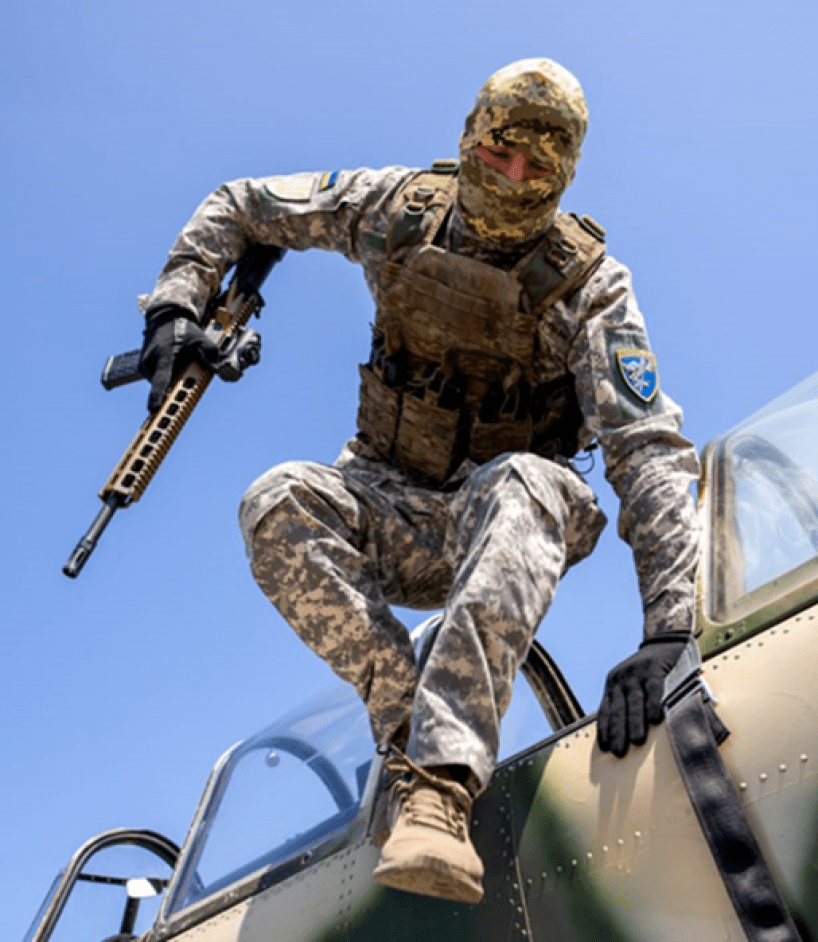
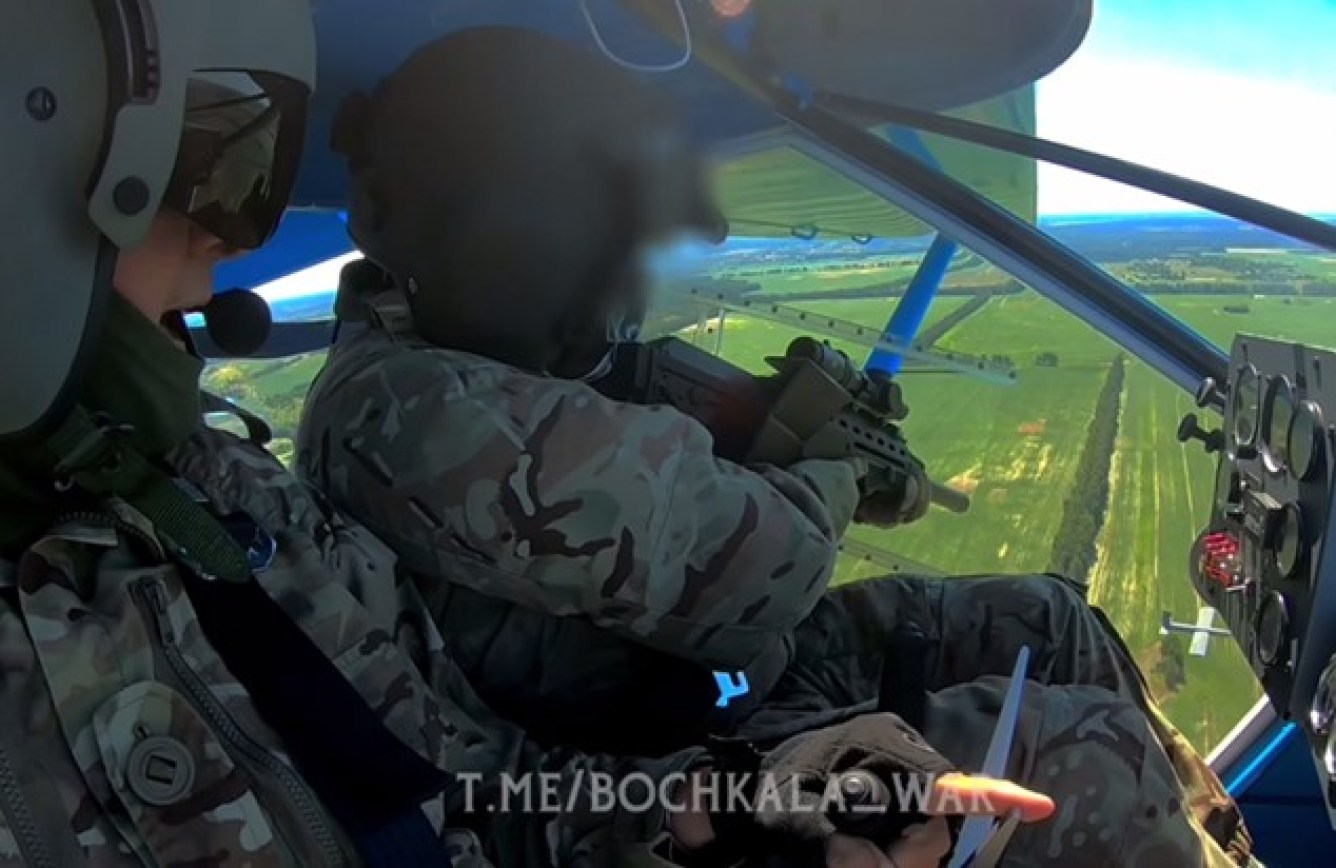
On July 15, 2024, the Russian Defense Ministry claimed that it shot down “a Ukrainian Yak-52 with a machine-gun mount.” This was actually an SS-26 Stone (Iskander-M) missile strike on Hydroport Airport near Odesa, their deployed air base, which killed the Ukrainian squadron commander, Kostyantyn Oborin, callsign “Kamikaze,” the first pilot to fly Yak-52 drone-buster missions, damaged several hangars, and apparently destroyed one Yak-52, #9010613, registered to the Civil Air Patrol of Ukraine.
This attack caused the Ukrainians to halt their Yak-52 operations until November 26, 2024, but then they were back in action again near Odesa, destroying a Russian Orlan-10 drone on their first return mission, flying a green-and-yellow Yak-52.
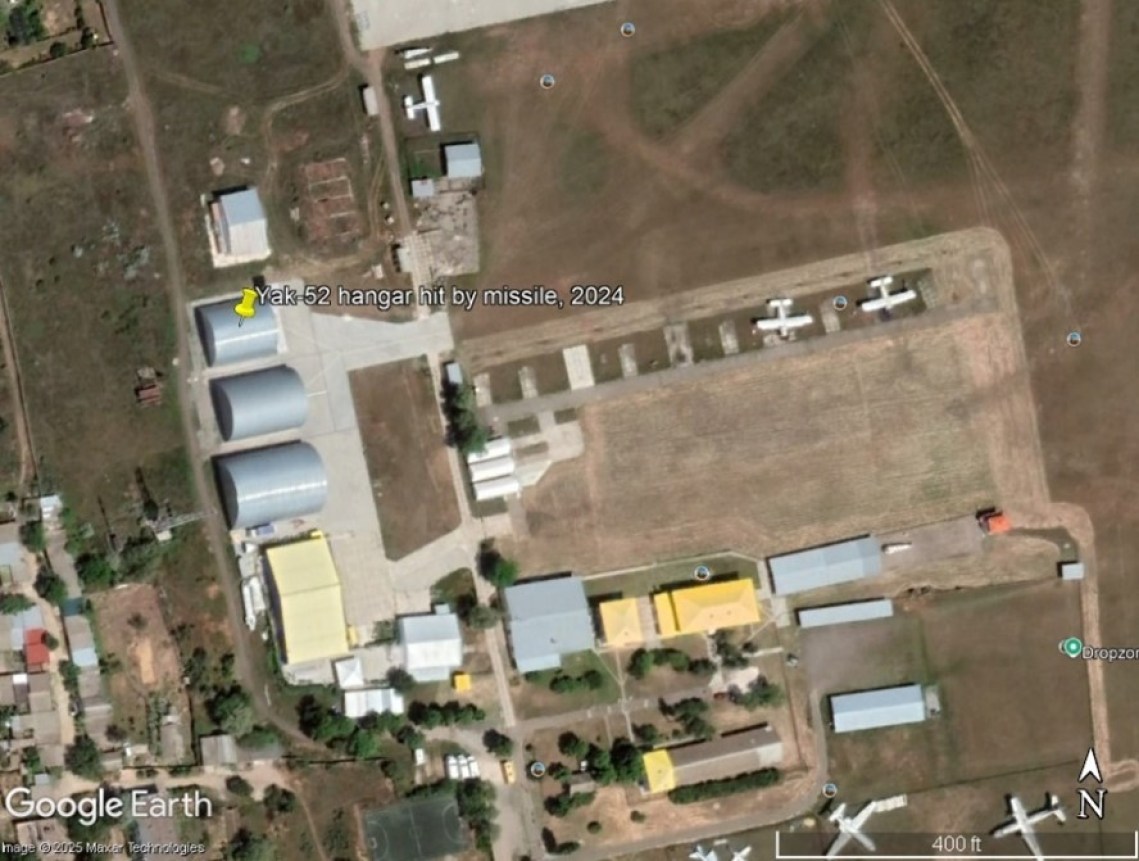
Also, in May 2024, a Ukrainian Yak-52 had to elude a Russian, surface-to-air missile by diving away at maximum possible speed. “Isn’t it time to shoot him down?” one Russian blogger wrote.
Interestingly, the Russians have been so impressed with Ukraine’s drone-buster Yak-52s that they have begun to equip a few of their own Yak-52B2 “drone fighters” with a PEGRAM S400 FLIR sensor under the left wing, and a 12-gauge, Saiga-12 semiautomatic shotgun strapped below the right wing.

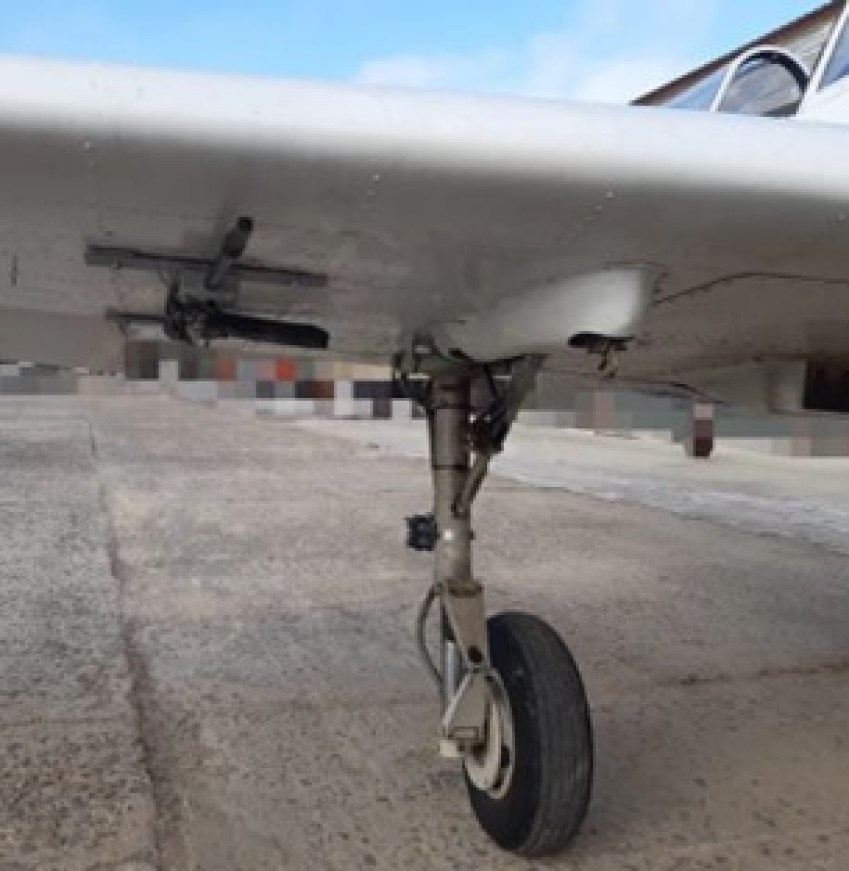

As a counterpoint, the Foundation for Assistance to Defenders of Ukraine has spearheaded the development and fundraising of Ukrainian “Winchester” drones, armed with twin-barrel, recoilless shotguns, stating that, “For the first time on video, drones – ‘Winchesters’ shoot down other drones with a shot.”
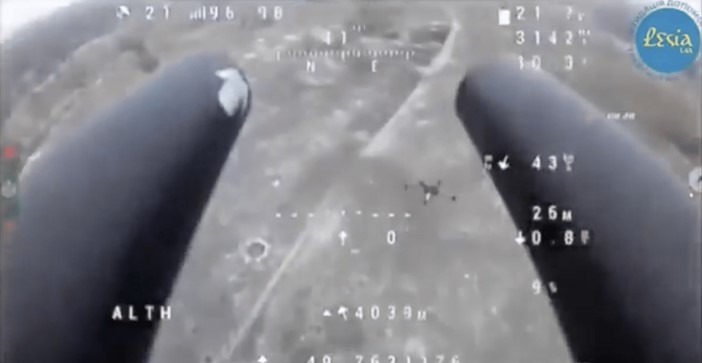
One enterprising, young, “Winchester” drone operator gunner even took advantage of a fleeting opportunity over the Kursk region of Russia, near the Ukrainian border, attacking a solitary, Russian or North Korean soldier who was walking along a dirt road. Firing with both barrels, he initially missed, then swooped around for a second pass, and the drone video appeared to show the soldier either dodging or falling.
In addition to shooting at Russian drones, these bold, Yak-52 crews have also adopted the British, World War Two tactic of using their wingtips to flip an enemy drone and send it off-course, initially used by British Spitfire pilots to disrupt cruising, German V-1 “Buzz Bombs” aimed at London.

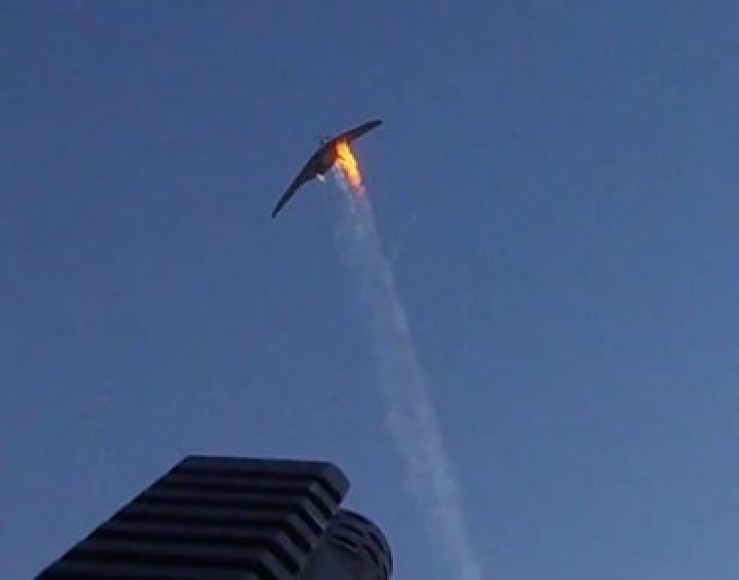
Another, related development in Ukraine is the August 8, 2025, appearance of a Zlin/Moravan Z-137T Agro Turbo crop-duster aircraft, armed with a pair of heat-seeking, AA-11 Archer missiles and two external fuel tanks for extended range, buzzing extremely low over a field. This appears to be the very latest anti-drone aircraft in the Russia-Ukraine War.
The U.S. Air Force Special Operations Command recently (April 2025) adopted the very similar, brand-new, OA-1K Skyraider II combat aircraft, a modified, Air Tractor AT-802U crop-duster, delivered to the 17th Special Operations Squadron (“Jackals”) in Oklahoma, and the 185th Special Operations Squadron of the Oklahoma Air National Guard, with plans to base more aircraft in Arizona and New Mexico.

Using the outdated Yak-52 as a low-tech weapon in a very modern, high-tech war seems highly improbable, yet its stunning success rate speaks for itself. Yak-52s currently account for 10 to 12 percent of all Ukrainian drone kills, which is a substantial contribution to the overall war effort. These dedicated Yak-52 combat crews clearly understand how deadly drone warfare can be for their beloved homeland, fighting relentlessly against the largest nation in the world.
In 1917, Captain Manfred von Richthofen, the fabled “Red Baron” of World War I, summed up this aggressive, aerial fighting spirit succinctly: “Fly on and fight on to the last drop of blood and the last drop of fuel, to the last beat of the heart.”

